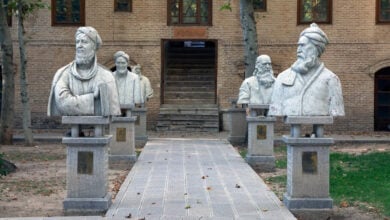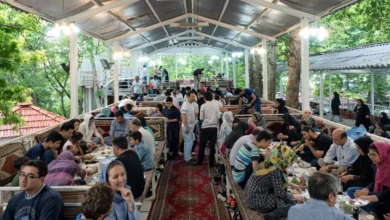
Experiencing the pastoral life for urban people has its own charms, because nomads live in the heart of nature and their daily affairs and jobs also depend on nature.
The lifestyle of Iran’s nomadic tribes began in the 13th century when the Mongols invaded Iran, forcing the people to leave their homes and turn to pastoral life and living in tents. Although this lifestyle is simple, it also comes with challenges that not everyone is capable of solving.
The continuation of this lifestyle to this day is influenced by many different factors, including economic, social, political, indigenous and agricultural developments. Currently, there are about a million nomads living in Iran.
It is interesting to note that throughout Iran’s history, nomads played an important and independent role in the fight against their enemies. In addition, their role in providing healthy and nutritious food to urban communities is also important.
Contents
Classification of Iranian Tribes Based on Nomadic Patterns
Iranian tribes are classified into four groups based on their nomadic patterns: fully nomadic, semi-nomadic, transhumant, and settled tribes. It is important to note that the nomadic patterns of tribes in Iran are vertical, meaning they migrate to different regions at varying altitudes to find suitable climate and water resources.
Fully Nomadic Tribes
These tribes have no permanent home and their main occupation is herding and cattle raising. They have a tribal social structure.
Semi-nomadic Tribes

In addition to living in tents, these tribes also had permanent dwellings where they settled during certain seasons.
Transhumant Tribes
In families following this model, some members are seasonal nomads, while others live in permanent homes and do not migrate.
Settled Tribes

These are tribes that no longer live in tents and have found suitable homes for year-round animal husbandry and farming in Iran. They no longer need to move to the highlands or the plains.
Interestingly, the settled tribes still adhered to certain tribal structures and hierarchies regarding ownership, economic matters, and cultural practices, similar to “il” structures.
and “tayefeh” which we will discuss later.
Different nomadic tribes in Iran
Different ethnic groups live in Iran as nomads, each of them has its own language, dance, music, cuisine, clothing and dialect.
The main and largest nomadic tribes in Iran, with a hierarchical tribal structure, include the Kurds (Lek(, Lurs) Bakhtiari(, Turks (Shahsevan), Persians, Turkmen, Arabs, Baloch and Brahui, who speak Kurdish, Luri, Turkish, Persian, Turkmens, Arabic and Balochi languages, respectively. Each of these ethnic tribes lives in different regions of Iran, including the west and southwest, eastern and southeastern, northeastern, northwestern, northeastern and central Iran.
Family life structure in nomadic society
The main pillar of nomadic life is the tribal lifestyle. All nomadic men have wives and some of them may have multiple wives. Children and women work together with men from morning, participating in various activities. The main occupation of Iranian nomads is cattle raising. They migrate to green spaces in different seasons to raise livestock, making spring and autumn the most important seasons in their nomadic migrations.

Most of the responsibilities associated with animal husbandry and nomadic life such as milking, yogurt making and butter making are undertaken by women. In addition to these jobs, nomadic women while raising children also engage in handicraft activities such as carpet weaving, kilim weaving, jajim weaving and felt making. Nomadic children also learn specific skills from a young age, such as shooting.
OrientTrips Experience
Book Daily Shiraz Tour
Social Structure of Nomadic Communities

Nomadic society in Iran is governed by a different structure than urban society. This structure was formed by nomadic tribes at different times.
Below, the main social structure of nomadic life is explained.
Tireh
Several families that have kinship and familial connections with each other form a tireh. These families also have political, social and economic ties. The tireh is considered the main pillar of the tribe and clan. The tireh itself is divided into smaller categories, of which the household is the smallest unit.
Tayefeh
It is a socio-political unit formed by the connection of several tirehs. Tayefeh
could lead to the formation of a tribe. Some Tayefehs also operate independently without being affiliated with any tribe. These independent Tayefehs also have their own leader, called Kalantar.
Il
An il is formed by the political alliance of several tirehs and tayefehs. Each il has its own territory and land, which is managed by an individual known as il-khan or il-beig. Ils can have either a common lineage or no common lineage.
The most important nomadic foods of Iran
The food variety among Iranian nomads is quite extensive, and different tribes have their own unique dishes based on their history and culture. Here are a few examples of nomadic foods and their ingredients:
Tali Nardoone
It is a dish made from pomegranate juice, onions, and oil. Essentially, the onions are fried, and then pomegranate juice and a little salt are added to it. Bread can be crumbled into the mixture and served.
Kaleh Joosh or Kalak Sooz
It is a dish made with yogurt, onions, and pennyroyal. After frying the onions, yogurt is added, and then pennyroyal is added after a little boiling. The dish is then ready to serve.

Ash Dango
This dish is typically cooked in winter and is made from legumes such as lentils, chickpeas, mung beans, wheat, along with spices, turmeric, salt, and finally water. This soup is also beneficial for treating colds.
Tribal Dances
One of the most important customs of Iranian nomads is dancing accompanied by local music. Nomadic dancing can be an enjoyable activity and can also involve elements of storytelling and symbolism. Cooperative and group dancing can spark friendship, cooperation and competition among Iranian tribes. In addition, in these dances, women dance together with men, symbolizing the equal status of women and men in the social division of labor.
Some dances also have ritual and religious aspects. For example, there is a symbolic dance performed to pray for rain among the tribes. Various types of dances exist, such as wood dance, three-legged dance, jeyran dance, and many others in different Iranian tribes.
The common aspect among all of them is the collective nature, and physical strength is highly valued in all of these dances.
Clothing culture of Iranian Nomads
The clothing of each tribe in the nomadic lifestyle varies and represents the distinct culture and traditions of each tribe and clan. In fact, nomadic clothing signifies their identity and authenticity. Nomadic clothing is usually characterized by a wide range of colors, which can be appealing to both domestic and foreign tourists. The fabrics used in these garments often include sheep’s wool, fur, cotton, and silk. Interestingly, these fabrics are usually handmade by the nomads themselves. Women’s clothing typically consists of long tunics, and men also often wear long shirts.

Below are some examples of clothing found in certain nomadic tribes:
Qashqai Nomads have a diverse range of clothing, including loose-fitting pants called “Dampa Goshad” or “Tonban,” collarless shirts known as “Qinaq“, long cloak-like shirts called “Arkhaleq“, and a round black felt hat called “Barak“.

Women wear layered skirts known as “Shaliteh” or “Tonban“. They also have a tunic called “Qinaq” with slashes on both sides, usually worn with a short jacket known as “Arkhaleq” Qashqai women often place a small hat called “Kalaqche” on top of their headscarves.
Bakhtiari men wear a felt hat known as “Kolah-e Khosrawi“, which comes in black, light brown, dark brown, and white colors. Their shirt is called “Chogha” and is black and white in color. The trousers worn by Bakhtiari men are called “Debit” and their shoes are called “Giveh“.

Bakhtiari women wear a long robe called “Joomeh” which has slashes on both sides. Their headscarf is called “Mina” and is made of silk, often adorned with pearls and old coins.
We hope this article has provided you with some useful information about the fascinating nomadic tribes of our country, Iran. As Iranians, we greatly appreciate and respect foreign tourists and we are delighted to welcome you. Iranian nomads are also very hospitable and despite their simplicity, they use the best amenities available to serve their guests. We look forward to welcoming you to Iran.






